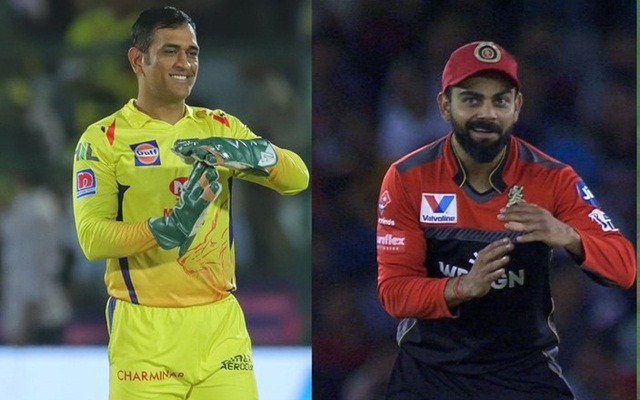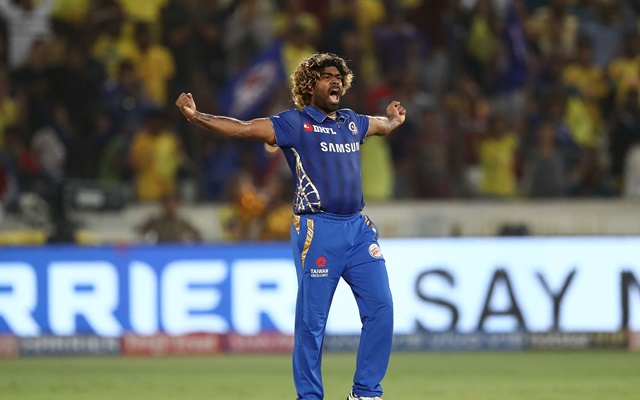IPL 2020: 5 major things that have changed from inaugural 2008 edition
Ever since the cash-rich tournament came into existence in 2008, the bat-and-ball-game has taken a big step to invigorate the dimming-flame of the cricketing candle.
View : 4.3K
2 Min Read


DRS. (Photo Source: Twitter)
It is rightly said that change is the only constant. From the world wherein the human race adored the brilliant display of bat and ball unfolding in ‘front’ of their eyes to watching the same sweet sport from miles apart through mobile phones, the human civilization has experienced radical changes-thanks to technological advancement.
Ever since the cash-rich tournament came into existence in 2008, the bat-and-ball-game has taken a big step to invigorate the dimming-flame of the cricketing candle. With no-two minds, the cricketing carnival has added the fuel of crisp spiciness in the form of nail-biting-finishes as no team is better than the other.
While the delayed edition of the 13th Indian Premier League has kicked-off in the United Arab Emirates amidst the conundrum of coronavirus, this article attempts to trace the 5 major changes that were injected to the IPL in its 13-year long journey. So, without wasting any further time, let’s rewind the needle of the clock.
Here are five major changes which the IPL has witnessed:
1. Mankading

Considered as distasteful in the gentlemen’s sport, ‘Mankading’ is the method of striking the bails out from the stump before bowling when the latter is outside the white-line demarcating the crease. It got its name from former Indian captain Vinoo ‘Mankad’.
The stalwart ditched the non-striker batsman as he went on to dash the stumps before completing his bowling run-up. This incident occurred against Australia in 1947. Hence, it sparked off controversy during those days as well. It continues to be part of the same club even today.
Mankading did not find its place in the first four editions of IPL. However, it was incapsulated in the competition’s rules and regulation in 2012. Off late, in 2019 Ravichandran Ashwin dismissed Jos Buttler in an uncanny style. Eventually, it drew controversy as some cricketing legends called the incident against the spirit of the game.
Despite mankading often being a cold topic in the sporting arena, it is worth noting that this practice still remains a bone of contention. Albeit, popular opinion remains that the bowler must alert the batsman before mankading him.
2. Decision Review System

To make a sport more engaging and logical, what can be a better alternative than technology. Adding the taste of authenticity and transparency to an edge of the seat matches is a must. The BCCI gave a green signal to the Decision Review System in 2018 after heavy discussions under the roof.
With one wrong decision by the umpires turning the tables for the team, Decision Review System is one of the best medical aid to restore the system of faith among the fans. Granted two reviews to each team in the match, D.R.S comes to help whenever the team assumes that the decision rendered by the umpire needs amendments.
In what can be called as the drama which unfolds with DRS, it depends on the teams on how they make use of these limited reviews worthfully. Lending in favour of this argument is the fact that teams often lose matches because of their misuse of the given apparatus.
3. Concussion substitutes

A concussion is a method wherein a fit player can replace an injured player during the course of the match. Provided he must accurately fix in his shoes. Giving teams an advantage, the substitution has to be ratified by the match referee.
IPL is a tournament which embraces changes with both hands. Hence, the authorities decided to pester this system in the world’s biggest cricketing league from the 13th season of the competition. Steve Smith was anticipated to be the first player to be conducted in the history of IPL. Fortunately, the power-hitter was fit to stitch a memorable inning in his own elegance.
Given the open and flexible nature of IPL to welcome change with sheer humility is what adds grandeur to this extravagant action thriller game. Although a healthy option for every team, fans wish that nobody succumbs to injury in an ongoing match.
4. Auto No-ball

Umpires play a big role in steering cricket in the right direction. They render full justice to the fast-forward nature of the game. However, with truckloads of pressure thrown at umpires, the chances of committing a mistake remain at an all-time high.
On that note, BCCI brought Auto-no ball option as a solution to human errors. The rule states that the third Umpire will take the onus of ensuring that every over-stepping remains under the scanner. Minimizing the mounting pressure on umpires appears to be fruitful in the long run of the sport.
During 2019 IPL, Lasith Malinga dropped an illegal delivery in the last ball of a match between MI and RCB. The later needed 7 runs to defeat Mumbai off the last ball and ended up losing by 6 runs. Eventually, the umpire overlooked the over-stepping costing RCB 2 significant points. Off late, the Auto-No ball system has been productive. The Third Umpire makes his decision after checking it on their screens.
5. Run-out (Bat in the air)

International Cricket Council (ICC) brought into effect the rule in 2017. This method was justified with a nod. It ensured that batsman need not drag its willow to remain standing confidently on the 22 yards.
The bat bouncing off the ground after the batsman grounds it behind the crease in his attempted dive or otherwise is a common scenario that gets unfolded on a cricket ground. However, paving a better route out to save the batsman’s wicket IPL authorities greeted the changed rule with sheer warmness.
The BCCI decided to pour the rule in the river of nail-biting finishes as a correct anti-dote to a frivolous former law. Helping the batsman in many ways, the decision proved impactful in the power-hitting game.
Download Our App